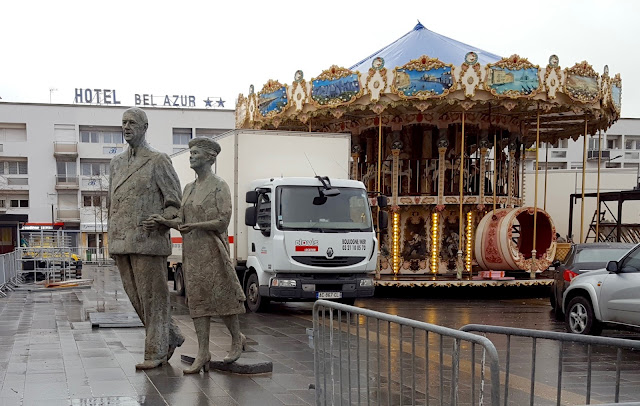Due to its position, Calais since the Middle Ages has been a major port and a very important centre for transport and trading with England. It was annexed by Edward III of England in 1347 and grew into a thriving centre for wool production. The town came to be called the "brightest jewel in the English crown" owing to its great importance as the gateway for the tin, lead, lace and wool trades (or "staples"). Calais was a territorial possession of England until its capture by France in 1558. In 1805 it was a staging area for Napoleon's troops for several months during his planned invasion of the United Kingdom. The town was virtually razed to the ground during World War II, when in May 1940, it was a strategic bombing target of the invading German forces who took the town during the Siege of Calais. During World War II, the Germans built massive bunkers along the coast in preparation for launching missiles on England.
The old part of the town, Calais proper (known as Calais-Nord), is situated on an artificial island surrounded by canals and harbours. The modern part of the town, St-Pierre, lies to the south and south-east. In the centre of the old town is the Place d'Armes, in which stands the Tour du Guet, or watch-tower, a structure built in the 13th century, which was used as a lighthouse until 1848 when a new lighthouse was built by the port. South east of the Place is the church of Notre-Dame, built during the English occupancy of Calais. It is arguably the only church built in the English perpendicular style in all of France. In this church former French President Charles de Gaulle married his wife Yvonne Vendroux. South of the Place and opposite the Parc St Pierre is the Hôtel-de-ville (the town hall), and the belfry from the 16th and early 17th centuries. Today, Calais is visited by more than 10 million annually. Aside from being a key transport hub, Calais is also a notable fishing port and a centre for fish marketing, and some 3,000 people are still employed in the lace industry for which the town is also famed.
Old Lighthouse
This tower dates from the 13th century, when it was part of Calais' fortified defenses
with the purpose of guarding and warning of imminent danger. It was a lighthouse until
1848 along with its other many uses.
Notre Dame de Calais
Both the biggest and oldest church in Calais. It dates back to the 13th century. The English occupation (1347-1558) strongly influenced its architecture.
Charles de Gaulle and Yvonne Vendroux got married here in 1921.
Richlieu Garden
Charles DeGaul and wife
New Lighthouse
Bordering what was the original port of Calais, the Couregain Maritime Quarter
has been the stronghold of seafarers for centuries.
We had a brief visit to Calais and were unable to visit its many sites due to weather.
We hope we will be back to this lovely town.
Now we bid au revoir to France and say cheerio to Great Britain.
Blessings to all!









No comments:
Post a Comment